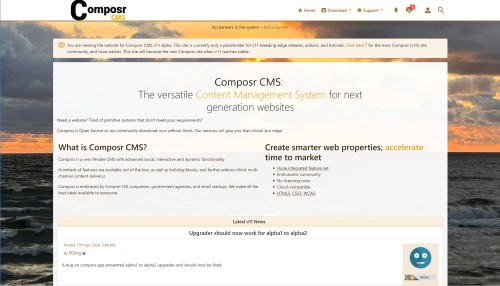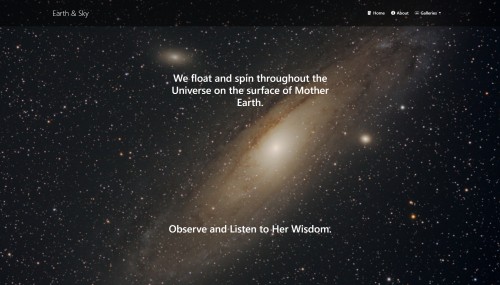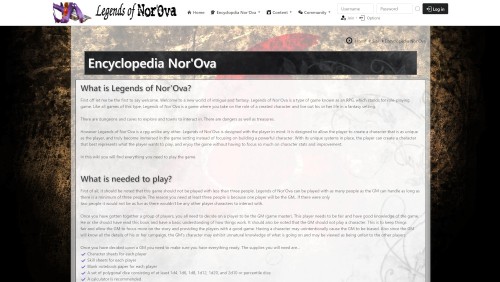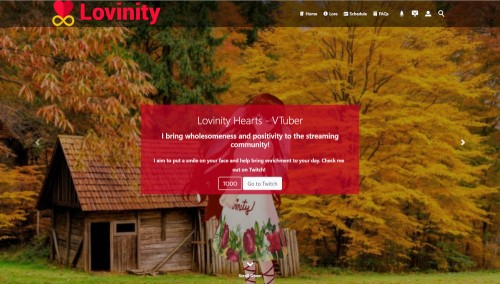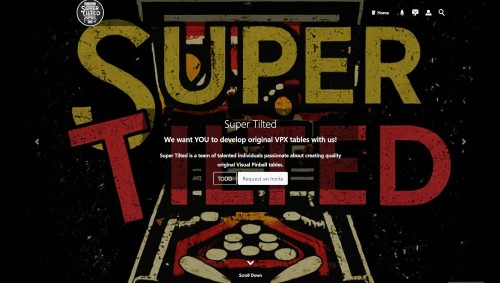Featured Sites: A-Z Index
H
Newest 10 Entries
| Question | What resources are available to help me navigate these legal and social challenges? |
|---|---|
| Answer | Composr offers various resources, including tutorials on accessibility, staff management, and general website dos and don'ts. You can also consult external resources like the COPPA website and Wikipedia for more in-depth information on specific laws and regulations. Remember that seeking legal counsel may be necessary for complex situations. |
| Question | What are some social considerations for running a website with community features? |
|---|---|
| Answer | Managing a community involves addressing social issues like child protection, free speech, discrimination, and abuse. Establish clear policies on these matters, including content moderation guidelines and procedures for handling feedback. Consider the diverse personalities and potential vulnerabilities of your users. |
| Question | What are my legal responsibilities regarding illegal content posted by users? |
|---|---|
| Answer | While "safe harbor" laws offer some protection, you are still obligated to take down illegal content upon becoming aware of it. Implement measures like content checks, clear rules prohibiting illegal uploads, and liability disclaimers. The level of responsibility varies depending on the severity of the content, from copyright infringement to more serious criminal content. |
| Question | What steps should I take to make my website accessible? |
|---|---|
| Answer | Website accessibility is essential for inclusivity and may be legally required under anti-discrimination laws. Composr is designed to meet high accessibility standards, but you need to maintain this when creating content or modifying templates. Following WCAG guidelines is crucial, and you can find more information in the accessibility tutorial. |
| Question | How can I ensure my website complies with email marketing laws? |
|---|---|
| Answer | Email marketing laws like CAN-SPAM protect recipients' rights to unsubscribe. Your website must include a clear 'List-Unsubscribe' header in every email, offer an easy unsubscribe process, and respect unsubscribe requests promptly. Composr provides built-in mechanisms, including an unsubscribe endpoint and support for the List-Unsubscribe header, to facilitate compliance. |
| Question | What are my responsibilities regarding user privacy? |
|---|---|
| Answer | You must have a comprehensive privacy policy that details the personal data you collect, its usage, and if it's shared with third parties. Laws like GDPR have strict requirements, including logging data access, data purging, and security measures. California law mandates specific elements in your policy, like handling "Do Not Track" requests and a clear process for communicating changes. Composr has an automatic Privacy Policy generator block to help you get started. This is used by default. |
| Question | How can I create effective website rules? |
|---|---|
| Answer | A well-defined rules page is crucial for setting expectations for user behavior and outlining consequences for violations. It should cover a range of offenses with appropriate punishments, reference relevant laws, and assign legal responsibility to users. Composr provides default rules pages that can be customized, and this page is displayed to users upon joining the site. |
| Question | What are the key legal considerations for running a website? |
|---|---|
| Answer | Several legal aspects need careful attention when operating a website, especially for large or corporate sites. These include establishing clear rules and terms of service, adhering to privacy laws like GDPR and California's regulations, managing personal data responsibly, complying with email marketing regulations like CAN-SPAM, ensuring website accessibility, addressing eCommerce regulations, and understanding liability for content and user actions. |
| Question | How do data-tpl and data-view behaviors work in Composr's JavaScript? |
|---|---|
| Answer | Composr uses data-tpl and data-view behaviors for associating HTML templates and JavaScript views, respectively. This facilitates clean separation of presentation and logic:
|
| Question | What are the advantages of using Composr's JavaScript libraries? |
|---|---|
| Answer | Composr's JavaScript libraries like $cms, $util, and $dom offer several advantages:
|
Top 10 Entries
| Title | Featured Content |
|---|---|
| Icon | 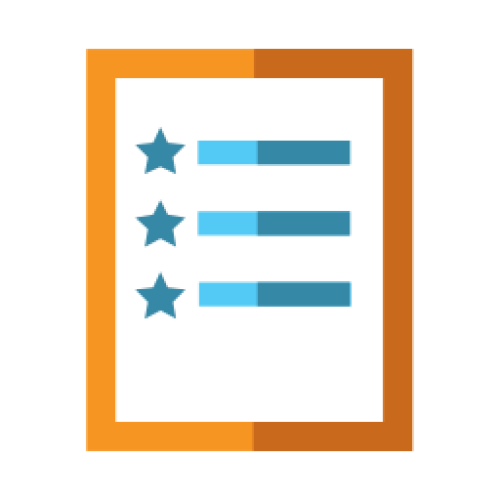 |
| Description | Random quotes: Put random quotes (e.g. testimonials) into your design. Awards: Showcase your most popular content, and optionally award the submitter with points. Tags: Set keyword tags for content and display tag clouds. Recent content: Automatically feature links to your most recent content (via main_multi_content block). Show website statistics to your visitors (via stats graphs or page hit counters). Random content: Feature random content from your website specified via a sophisticated filtering language. |
| Title | Newsletters |
|---|---|
| Icon |  |
| Description | Automatically create newsletter issues highlighting your latest content Double opt-in: Prevent false sign-ups by asking subscribers to confirm their subscriptions. Host multiple newsletters: Visitors can subscribe to the ones they want. Flexible mailings: Send out mailings to all members, to different usergroups, or to subscribers of specific newsletters. Welcome e-mails: Send multiple welcome e-mails to new users automatically, on a configurable schedule (Conversr-only). Bounce cleanup: Automatically clean out bounces from your e-mail list. Unsubscribe: Recipients can easily unsubscribe from newsletters through an unsubscribe link provided in the e-mail. Change settings: Newsletter subscribers can change their subscription settings on-site. Drip sending: Prevent overwhelming your mail server or outbound limits. |
| Title | Searching |
|---|---|
| Icon |  |
| Description | Choose what is searchable Boolean and full-text modes Keyword highlighting in results Search boxes to integrate into your website Logging/stats OpenSearch support: Allow users to search from inside their web browser. Results sorting, and filtering by author and date Search within downloads: Including support for looking inside archives. Composr fast custom index: Support full-text searches in instances where your database does not |
| Title | Banners |
|---|---|
| Icon |  |
| Description | Multiple types: Each one can specify its own width-by-height (e.g. skyscraper). Smart banners: Integrate text-banners into your content via keyword detection. Broad media compatibility: Image banners, external banner rotations, and text banners. Determine which banners display most often Run a cross-site banner network Hit-balancing support: A site on a banner network gets as many inbound hits as it provides outbound clicks. Targeted advertising: Show different banners to different usergroups. Track banner performance Use the banner system to display whole sets of sponsor logos or partners Supports Geotargeting Periodic content reviews: Reminders to check (or remove) banners |
| Title | Installation |
|---|---|
| Icon |  |
| Description | Quick installer: Our self-extractor allows faster uploads and will automatically set permissions. Wizard-based installation Auto-scans for compatibility problems: Be informed of problems before installing Get your site up and running in just a few minutes Keep your site closed to regular visitors until you're happy to open it Configures server: Automatically generates an htaccess file for you (for Apache). Auto-detection of forum settings for easy integration Install test content |
| Title | Web Pages |
|---|---|
| Icon |  |
| Description | Add virtually unlimited pages to your site WYSIWYG editor (powered by CKEditor) Convenient edit links: Staff see “edit this” links at the bottom of every page. PHP support: Upload your PHP scripts and run them inside Composr (may require adjustments to the script code). Hierarchical page structure: Supports parent and child pages Periodic content reviews: Helping you ensure ongoing accuracy of your content. Add Comcode pages (the default) or static HTML pages Supports revisions and revision control systems (such as git); add new pages as files, and Composr will automatically register them in its system. |
| Title | Downloads |
|---|---|
| Icon |  |
| Description | Clear organisation: Uses a tree structure for unlimited categorisation. Anti-leech protection: download links contain a session ID Community-centred: Allow users to comment upon and rate downloads Many ways to add new files: Upload files. Link-to existing files. Copy existing files using a live URL. Batch import links from existing file stores. Author support: Assign your downloads to authors, so users can find other downloads by the same author. Set licences: Make users agree to a licence before downloading. Images: Show images along with your downloads (e.g. screen-shots) (this implicitly uses galleries). Basic file versioning support Control monthly bandwidth use site-wide |
| Title | Wiki+ |
|---|---|
| Icon |  |
| Description | Think “structured wikis”. Create an encyclopaedic database for your website Use a tree-structure or traditional cross-linking Supports revisions: Track changes Display the tree structure of your entire Wiki+ Allow users to jump in at random pages Make your pages either wiki-style or topic-style Allow members to contribute to Wiki+ pages by adding Wiki+ posts |
| Title | Quizzes and Surveys |
|---|---|
| Icon |  |
| Description | Run a competition: Choose winners randomly from those who passed the quiz. Surveys: Gather data and find trends. Tests: Test members' knowledge on a variety of topics. Cheat prevention: Settings to prevent cheating, such as time limits, question / answer shuffling, and re-testing rules. Integration with points: Charge points to enter a competition, or award points for winning. |
| Title | News and Blogs |
|---|---|
| Icon |  |
| Description | Member blogs: Allow members to have their own blogs on their profile RSS and Atom support: Export and import feeds. Trackback support: Send and receive trackbacks. Scheduled publishing Ping support and RSS Cloud support Multiple news categories and filtering Multiple ways to integrate news into your website Import from RSS feeds Supports geotargeting Members can rate and comment on news articles and blog posts Send out a news article as a newsletter |



